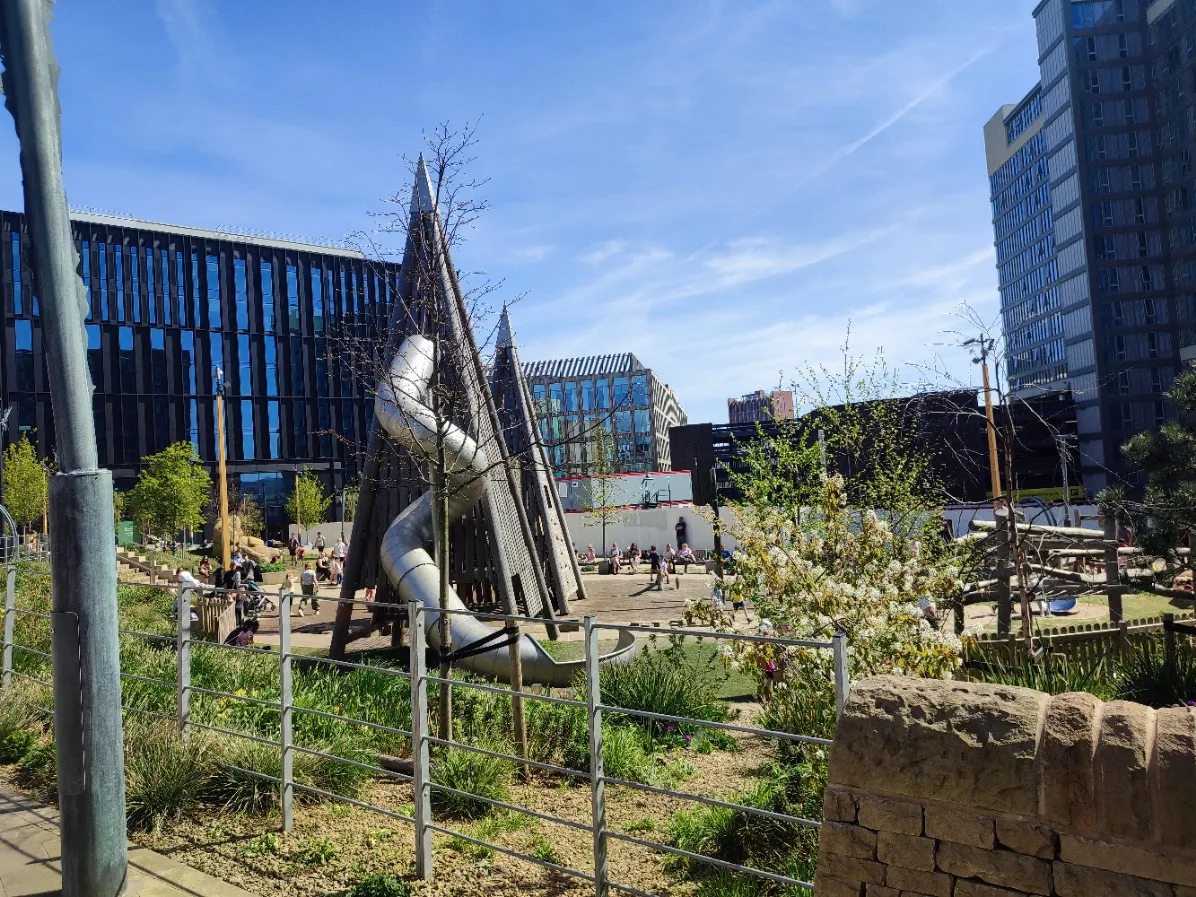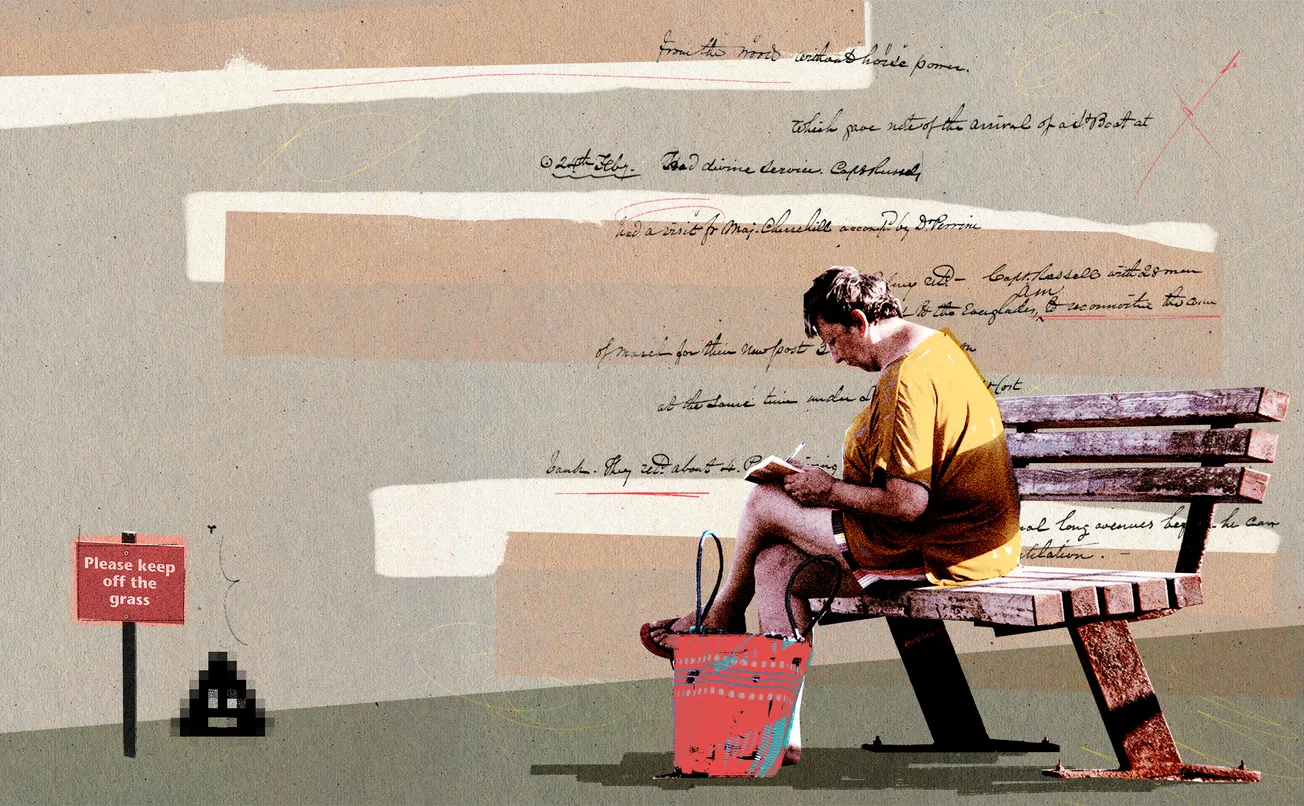If you were passing in a hurry, why would you dawdle on Hazlehurst Lane? It’s just off Lightwood Lane — an unassuming side street off the outer ring road, just before Bochum Parkway. You might assume you’re more likely to strike upon a cure for the common cold than you are to find much of interest in that direction. But head down past the riding stables for a few hundred yards, and it’s possible to imagine you’re stranded in a different century — finding yourself, as you do, squarely in Derbyshire farming county.
Workers in sun hats till the soil, a young woman is cutting flowers, and a man with a beard is inching his way along a ploughed field, planting out young leeks by hand. Goldfinches fly between the hedgerows, while insects buzz.
At a time when a new war in Europe is inflating fuel prices and threatening the world supply of food, grain and fertiliser, could this kind of tableau pose an answer to the nation’s food security?

12 years ago, Huw Evans approached the elderly owners of Hazlehurst Farm, the Rose brothers, and agreed the sale of a large hillside plot they didn’t need anymore.
“They were slowly downsizing, and wanted to sell to someone they’d got to know about. We get on well with them, they’re really supportive because we’re food producers.”
Huw is a commercial property manager and one of the founders of the Nether Edge Farmers’ Market, but his life changed direction one day thanks to a truly awful bag of apples.

It was just at the beginning of the local food movement, he tells me, after he had seen the success of the farmer’s market. “I bought these apples from a grocer in Sheffield, they looked fine, but when I got them home they were tasteless and the texture was terrible. I just thought, surely I could grow better apples than this?”
After reading up on modern market gardening, his vision was to build up a cluster of small organic fruit and vegetable growers who could collaborate, share equipment, and generally support each other. As luck would have it, he had just sold a Victorian warehouse in Cardiff, and the £100,000 proceeds bought the first 12 acres of land for the Sheffield Organic Growers collective.
After surveying the soil, he planted a three-acre orchard with 30 varieties of English apples, a dozen different plums and pears, a few quince and medlar trees, along with rows of blackcurrant bushes, white and redcurrants and jostaberries.

“We also planted some cherries. But unfortunately I’m not here at 5am when the birds spot them ripening, so we don’t really get many of them. But I enjoy the wildlife. It’s well fed.”
Huw was soon joined by Matt West, who grows for the Beanies wholefoods cooperative, and Martin Bradshaw who runs his own Moss Valley Market Garden ‘biodynamic’ growing business, and says demand for his vegetable bags has grown from 24 customers in 2012 to 200 now.
Having more local farms supplying local grocers and delivery schemes has helped us become more nationally self-sufficient, rather than feeding the nation from the large retailers, Martin says. “The organic sector is really well placed at the moment because we’re not reliant on artificial fertiliser. We can just keep doing what we’re doing.”

Since 2012, several other growers started work on the new farmland. All of the growers say virtually all their produce travels less than ten miles from the farm: either to local independent grocers, or vegetable and fruit bag customers.
Nick Johnson, who works as part of Sheffield Organic Growers, notes that they are still fairly reliant on petrol and diesel for transport — but since they’re based so much closer to their market, this doesn’t affect their overheads too much. “And don’t forget cheap imported food is very reliant on petrochemicals because you need a lot of gas to make the nitrogen fertiliser that’s used,” he adds. “It’s tough times for people at the moment, but I’m fairly confident the organic sector can keep prices more stable.”
Huw is stepping through the long grass into his new field of clover, hoverflies and butterflies. It’s a beautiful day — but he’s left his shorts at home. “I wear long trousers to work, even in the summer,” he says. “Otherwise the horseflies will get you.” Last year, he bought another eight acres from the Rose brothers, which is now covered in ‘green manure’ ground cover plants, and rows of nearly 2,000 broadleaf tree saplings from the Woodland Trust. The trees, on poorer soil not suitable for crop growing, will protect the vegetables from wind and provide a green corridor for wildlife between two other woodlands.

If you’ve ever walked on a footpath on the grey half-dead soil of a traditional sprayed farmer’s field, this could not be more different. Wildflowers are not weeds on this farm, and wildlife is welcomed.
“Not everyone enjoys the huge proliferation of insect life,” Huw says — a sentence I suspect might be a serious understatement. However, he notes that if the insects have the right conditions to thrive, their doing so supports birds and other animals that use the insect population as food. “It leads to an abundance of all wildlife,” says Huw.
That wildlife is something Huw is trying to employ for his own uses. “We put up bird boxes for great tits which eat the moth caterpillars that live in fruit trees,” he says. “You could say we use great tits instead of insecticide.” Similarly, several owl boxes have brought in a family of barn owls, which keep down the mouse population that can plague the autumn harvest.

The farmers on the Hazlehurst land use no pesticide, herbicide or artificial fertiliser, and crop gnawers like hares and rabbits are deterred by barrier protection, like fleece over the growing vegetables. If the rabbits increase in number, as they do, being rabbits, the stoats move in, and growers get used to the sound of screams in the undergrowth as a stoat clings with its teeth to the neck of a dying rabbit.
“It sounds terrible, but it is a natural balance I suppose,” says Huw. “But it does feel as if the land has been recovering since we’ve been here, with the amount of wildlife we see.”
Sally Benson also works with Sheffield Organic Growers, and has recently launched a cut flower business called Over the Hedge.

“I love being connected to this spot,” she says. She tells me that they’ve seen grass snakes recently and a red kite, they have kestrels, hares, stoats, lots of badgers, and deer come up from the woods. “I think we have a brilliant model here, we can feed a load of Sheffield people from just these 12 acres, or 20 acres soon. It’s productive but with plenty of wild bits too.”
The growers have learned as they’ve grown over the last twelve years. Losing a quarter of a broccoli crop overnight to rabbits and birds because he was too impatient to wait for the fleece barrier to arrive was an early lesson, says Huw.
He’s recently built a large barn for storage and packing produce, with roof-mounted solar panels to power a cold store (a sort of room-sized fridge), an electric vehicle and farm tools — and an internet link to a folk music stream crooning in the background as he talks.

“Quite a lot of food was grown close to cities in the past, before fossil fuels became so cheap and food could be transported from further away,” Huw says. “Those market gardens had disappeared, so now maybe we’re bringing that old idea back, but in a slightly updated way.”
There are parallels now to earlier wars, he suggests, when the nation was urged to dig for victory as British food supplies were halted by hostile warships.
“Relying very heavily on food from other countries is fundamentally a slightly insecure thing to do,” he says. “It feels more secure and sustainable to be able to grow your own food close to where you live.”

Huw now grows between 6,000 and 7,000 kg of apples per season on his three-acre orchard, and he reckons between them the Hazlehurst growers supply food to around 2,000 Sheffield people a week. Recently a new farm was opened further up the lane by the Regather food cooperative, illustrating the growing market for local Sheffield food.
But even if there were a string of similar-sized growers all around the city, rather than just the existing handful of operations at Hazlehurst, Wortley, Stannington, Heeley, Loxley and Whirlow, it’s not enough, Huw recognises, not least since people need protein and grain as well as fruit and vegetables. But it is part of the food security answer, he says, along with eating less meat and feeding far less grain to animals.
During the pandemic, Huw and colleagues carried on their work in the sun, providing food for the city, but took the site off Google maps after visits from people he felt were sounding out poached food supplies for their families if the food system actually collapsed.
This year, they’re officially back, and planning an open day in a month or two. But if you do want to go and see what one version of our future food supply looks like, wear your long trousers.


Comments
How to comment:
If you are already a member,
click here to sign in
and leave a comment.
If you aren't a member,
sign up here
to be able to leave a comment.
To add your photo, click here to create a profile on Gravatar.







